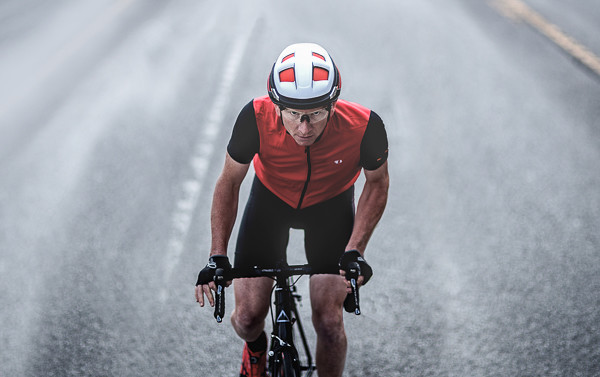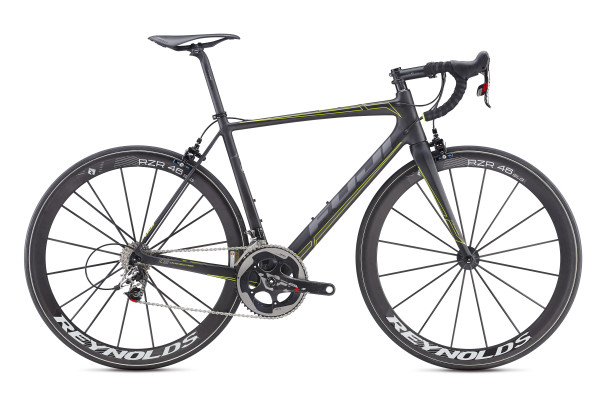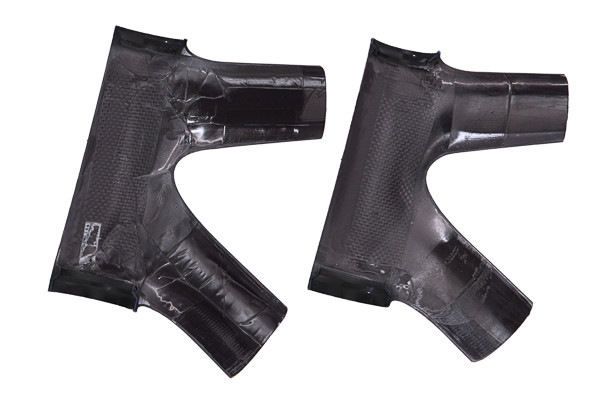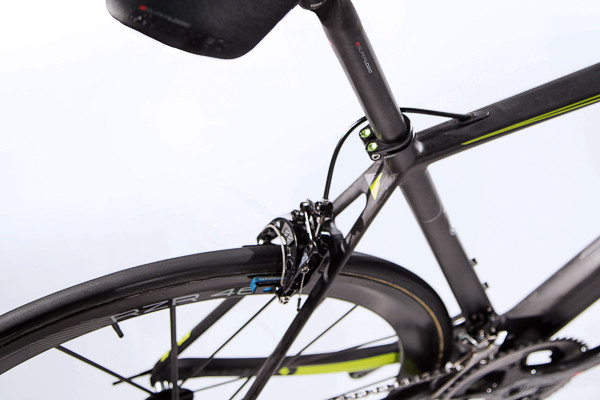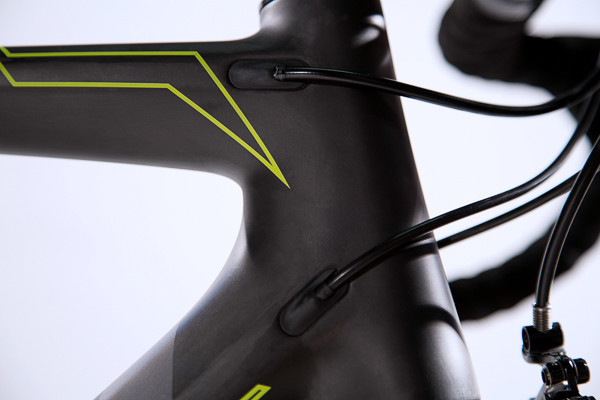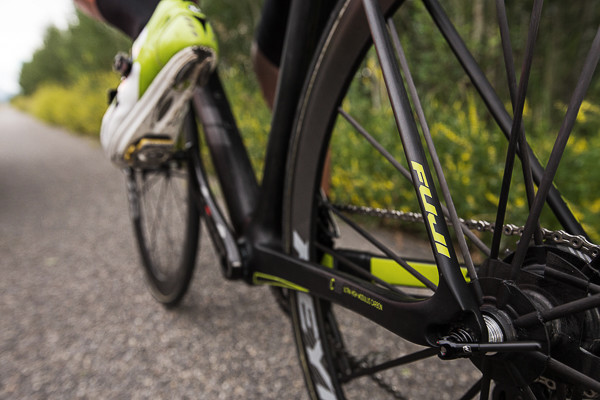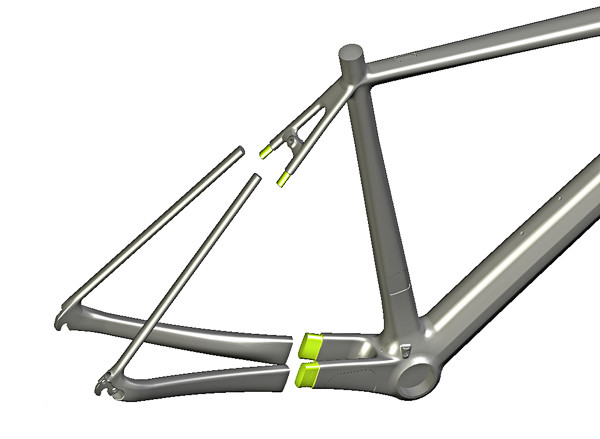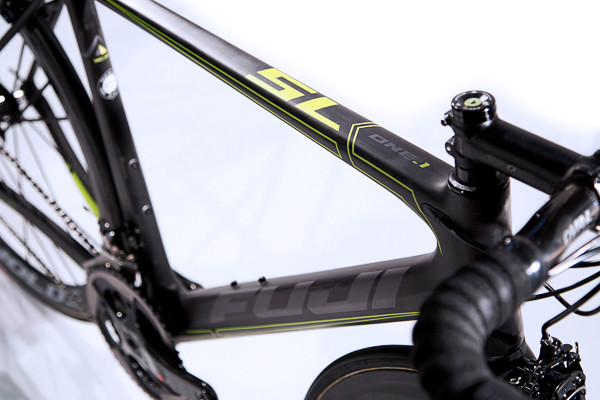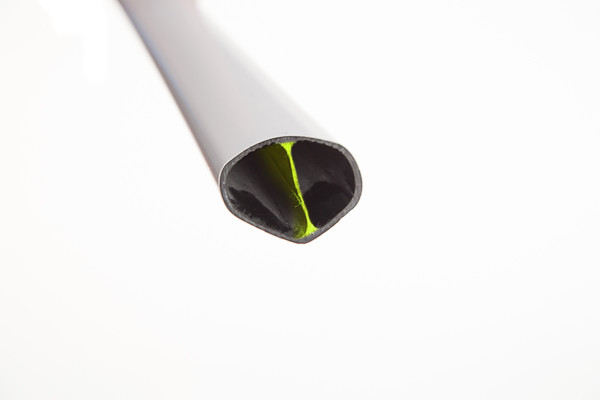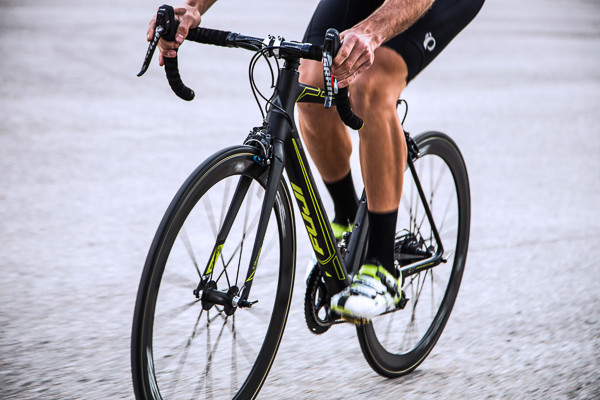Fuji has been very busy the last two years developing their newest road bike, the Fuji SL, and according to the specs, the results are astounding. The bike will be shown to the public for the first time this weekend at the 2015 Vuelta a España, but we were given an early preview and interview with Fuji’s longtime Road Project Manager Steven Fairchild to get the low down on how they accomplished such a feat.
Fuji knew how much everyone loved the ride and stiffness of their Altamira line, and that they needed to set the stakes high. The result is a frame that came in at a jaw dropping 695 grams without sacrificing anything that the Altamira offered. Click on through to see the detailed pictures and technology that went into Fuji’s new flagship road bike and a couple of hints of more things coming down the pipeline…
Here is what 10.9 pounds looks like (as shown). This is accomplished by expanding their High Compaction Molding process on their C15 high-modulus carbon tubing to all tubes, including the rather thin seat stays. They also reduced the number of assembly joints in the frame and designed light weight perfectly integrated cable stops into the frame.
The High Compaction Molding process involves placing nylon bags aired up to 200psi into each tube while setting up in the molds eliminating any wrinkles and excess resin. According to Fairchild, by using the High Compaction Molds, not only does it reduce weight and smooth out the frame’s interior leaving a finish as nice as the outside’s, but it also strengthens the joints where they intersect by eliminating the imperfections. Using this throughout the SL’s frame enabled them to significantly lighten the frame while making it stronger at the same time.
Fuji even went as far to to produce nylon bladders small enough to fit within their narrow seat stays to eliminate any wrinkles and excess carbon.
What may seem to be a small detail ended up being one of the more complex part’s of the SL’s design. When you design a frame this light, you don’t cut corners but must make it compatible for both the easy to route Di2 cables as well as the less forgiving mechanical cables and housing. They tried several versions that worked, but looked like an after thought. What they ended up going with is some really sleek injection molded cables stops that fit flush into the frame and were at the same time lighter than the alternatives.
The SL’s combined 695 gram frame and 293 gram fork are a whopping 237 grams lighter than the Altamira’s making it 19% lighter than any bike Fuji has ever produced. To further improve on the bike’s strength and weight, Fuji only bonds the left and right stays that incorporate the carbon dropouts to the bike’s main frame totaling only four bonded joints compared to the Altamira’s eight.
WIt’s a bike so light, it’s easy to assume there might be a reduction in frame stiffness. However, this bike was not designed to be *just* a climber’s bike. It is in fact laterally stiffer than the Altamira. Fuji uses an octagonal shaped down tube on the SL that, with the assistance of the High Compaction Molding, gives it a head tube that is 9% stiffer and a bottom bracket that is 11% stiffer than the Altamira’s.
To add to that, the SL’s fork uses their RIB technology that incorporates a thin wall support beam of sorts that runs the entire length of the fork’s inner legs increasing lateral stiffness by 19% giving it razor sharp handling.
A unique feature of Fuji’s road bikes since 2010, (until the last year or so when a competitor started doing it), is that their road bikes have different fork off-sets between the 52cm and 54cm sized frames. Though never marketed, this was something Fairchild had been curious about. Steve has been at Fuji bikes since 1985, starting in customer service and becoming project manager in 1989. In 2003, he left to work for Jamis, but returned to Fuji in 2010. While racing in the 1970’s and 80’s, there was a point where he had a different bike for each day of the week and most all of them were steel Italian frames with Record, (*sigh* no, he no longer has them). Having gained a good feel for each bike, his early engineering roots struck his curiosity and he began measuring head angles the fork’s off-sets. Years later he began studying this again and discovered by changing the 43mm off-set to 52mm on bikes 52cm and smaller, it kept the handling characteristics more consistent between the wide array of sizes.
The Fuji SL comes in sizes, XXS/46, XS/49, S/52, M/54, L/56, XL/58, and XXL/61, and each frame size has a slightly different lay up so to give them the same ride quality throughout the size range. The Altamira will remain only in the entry level form in their road bike line up.
The SL comes in 6 models as well as a frameset plus a Team Replica for the Euros. The 2 Series frames use Fuji’s C10 High Modulus carbon and are said to weigh the same as last year’s Altamira SL.
SL 1.1 – Red22 – $9,999
SL 1.3 – Dura Ace Di2 – $6,320 (USA only)
SL 1.5 – Dura Ace Mech – $4,740
SL 2.1 – Ultegra Di2 – $3,690
SL 2.3 – Ultegra Mech – $2,240
SL2.5 – 105 – $2,000
1.1 Frameset – $1,900
Checkout Fuji’s well done video on the SL. The narrator gives it a great flare with a build up equal to that of Sylvester Stallone’s Expendables 3.
There was also a mention of some new mountain bikes with a new suspension platform that will be presented at Eurobike next week and possibly another road worthy bike to compliment the lineup soon after that. We’re not allowed to mention any details past that, but stay tuned as our crew gets a close up look next week.
